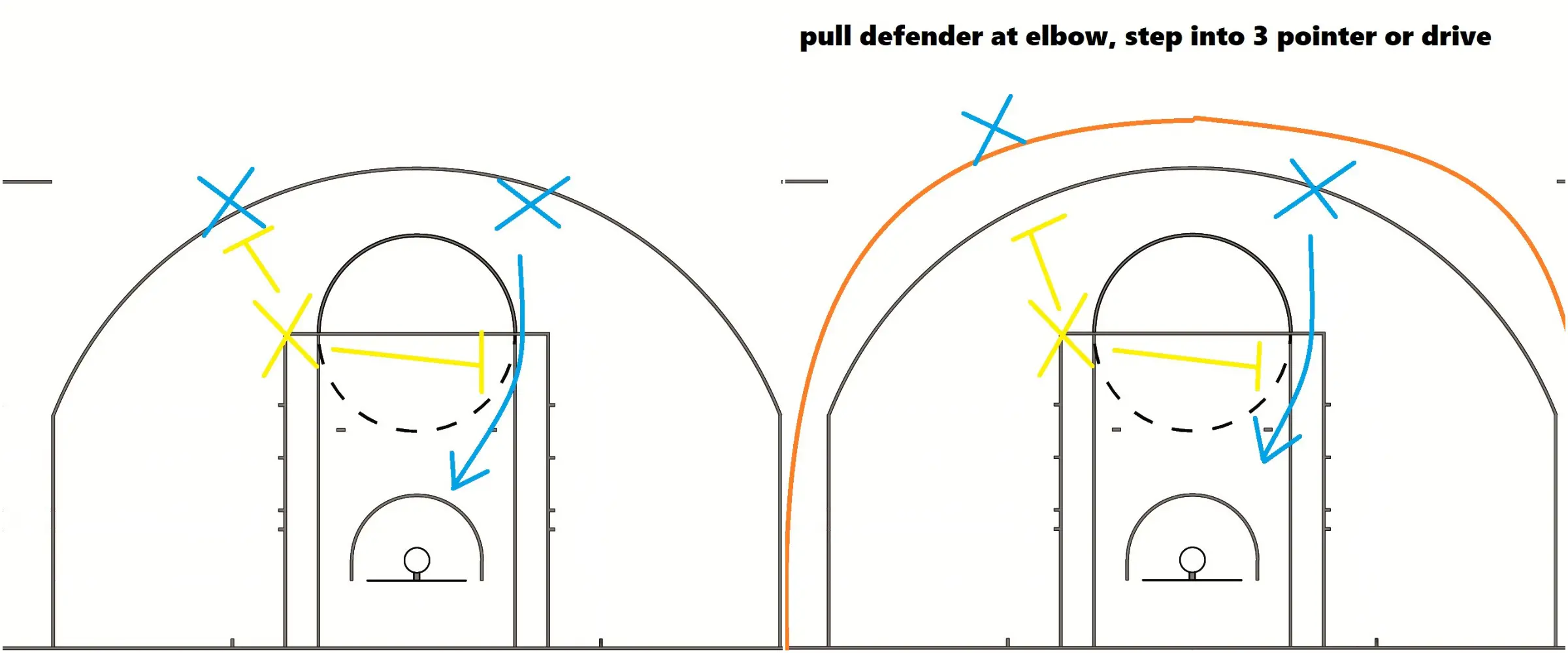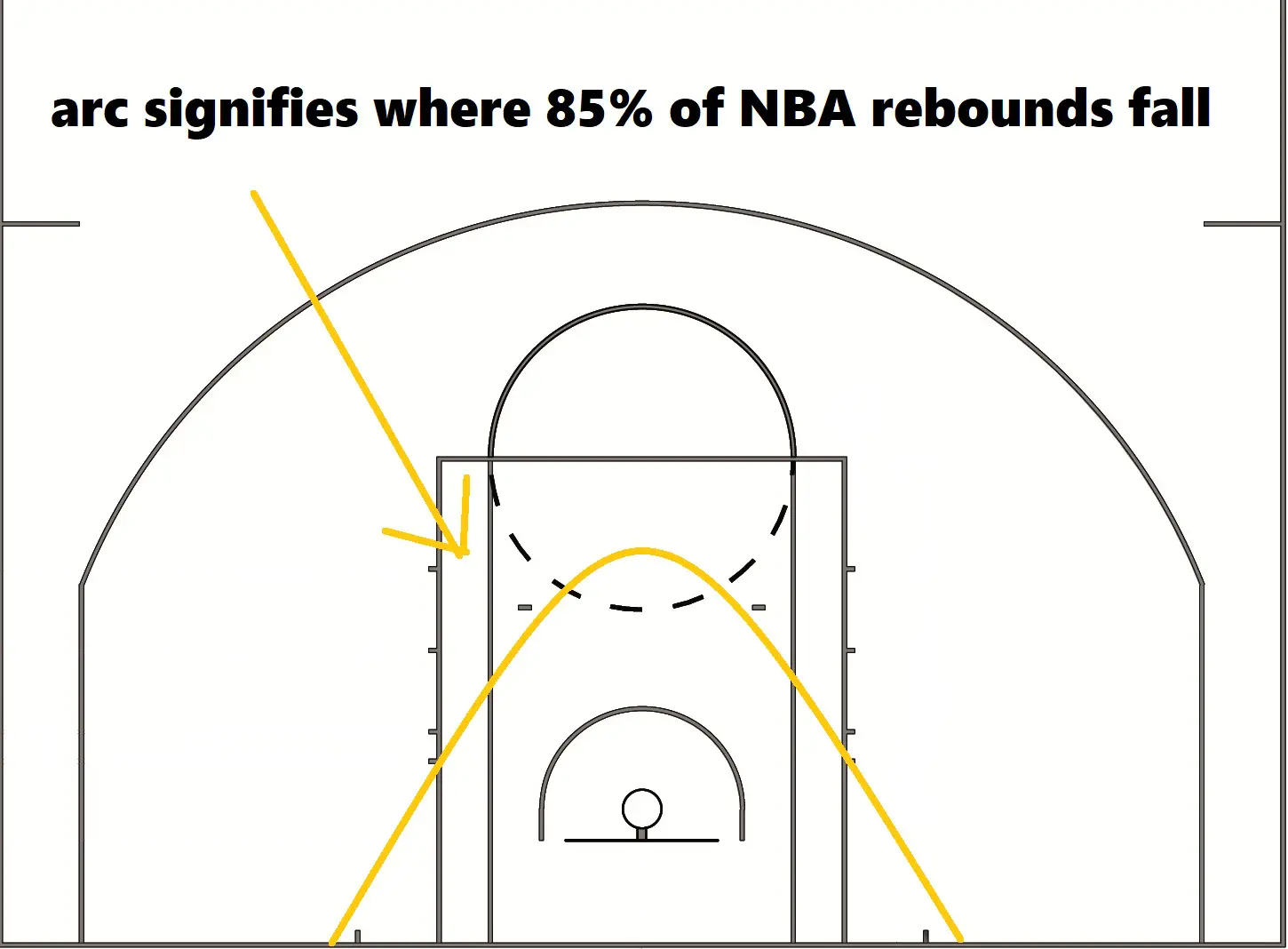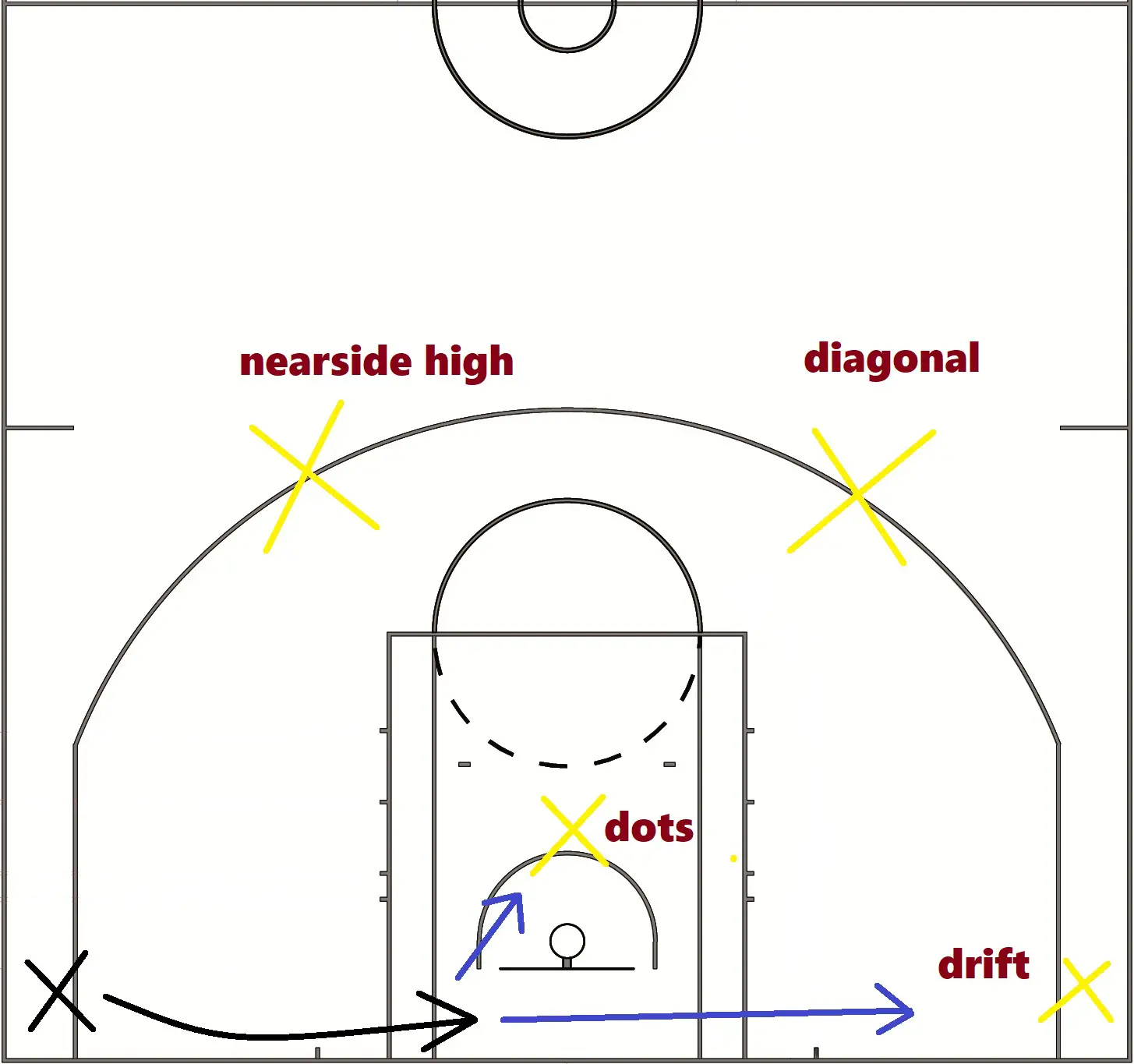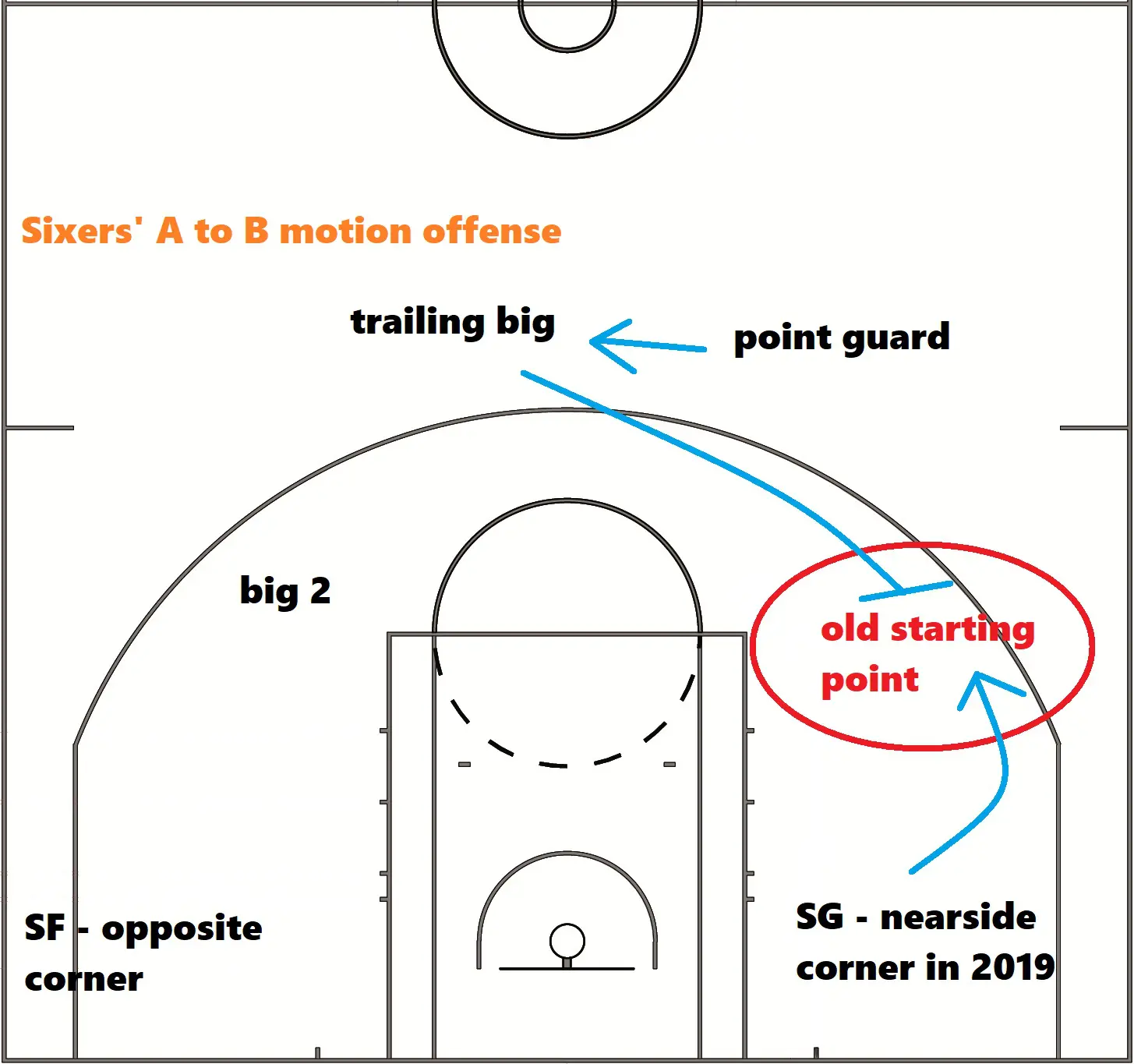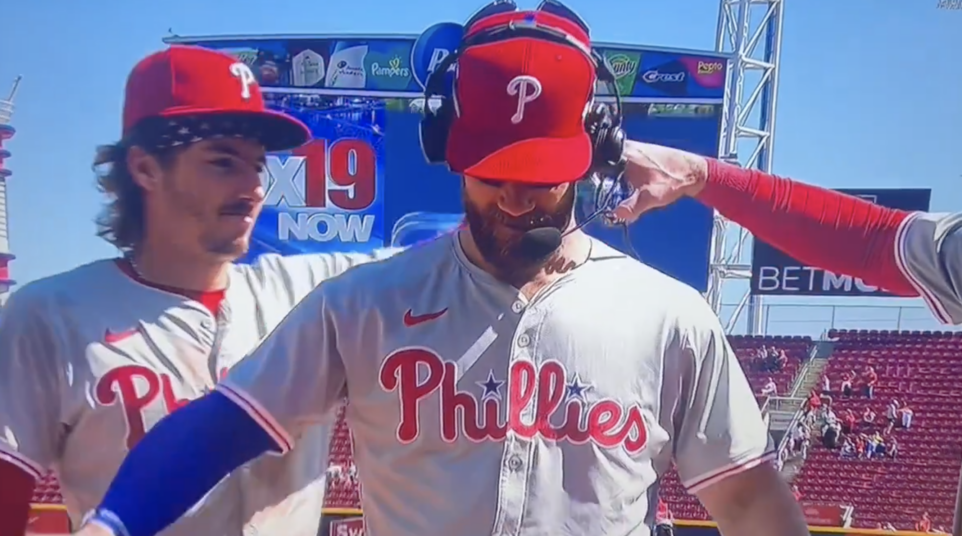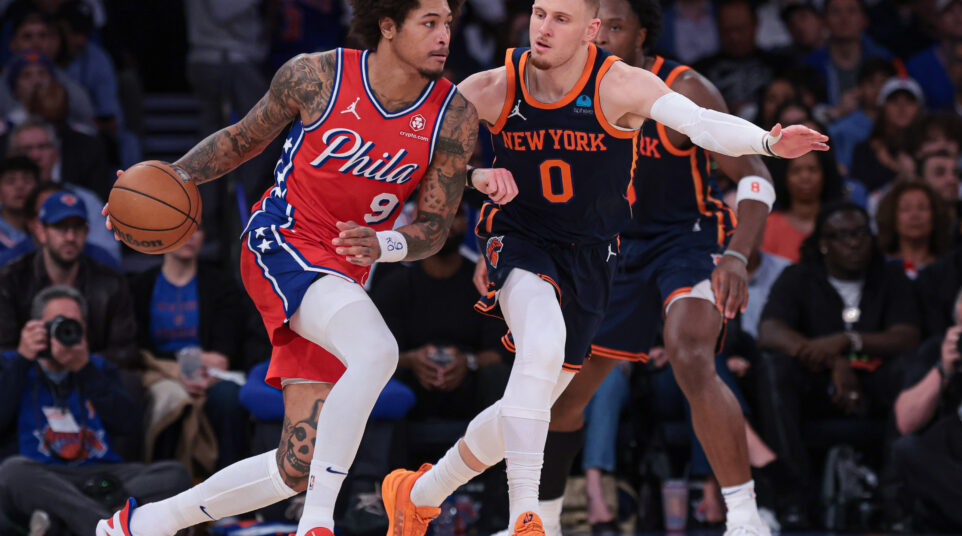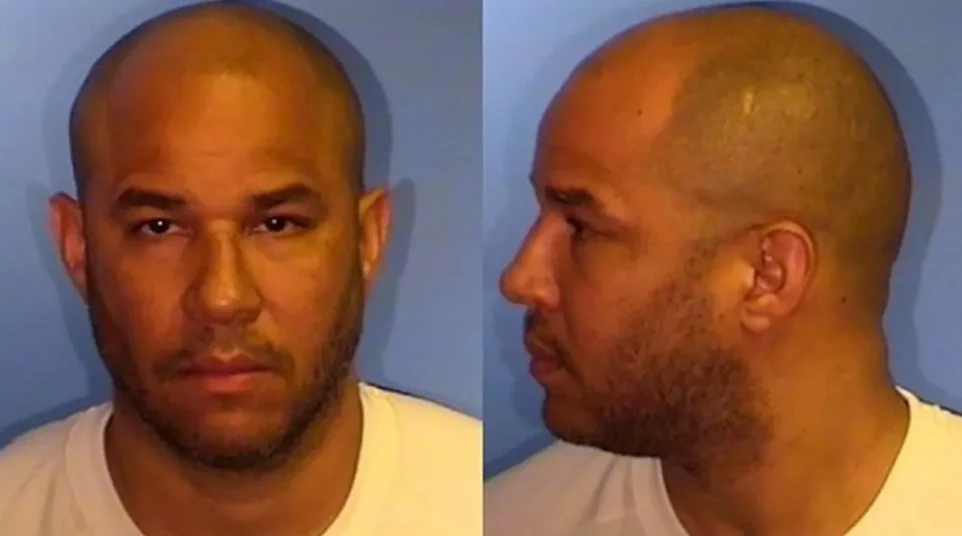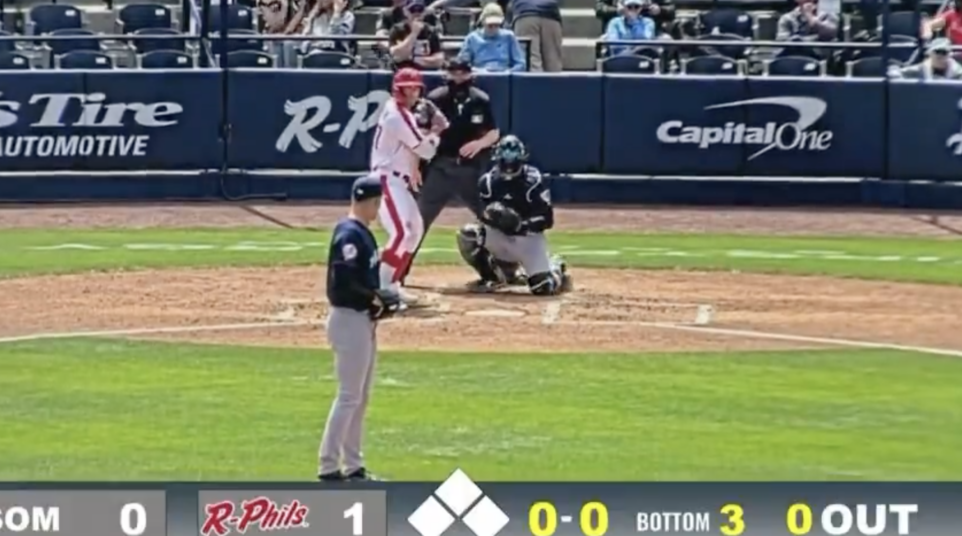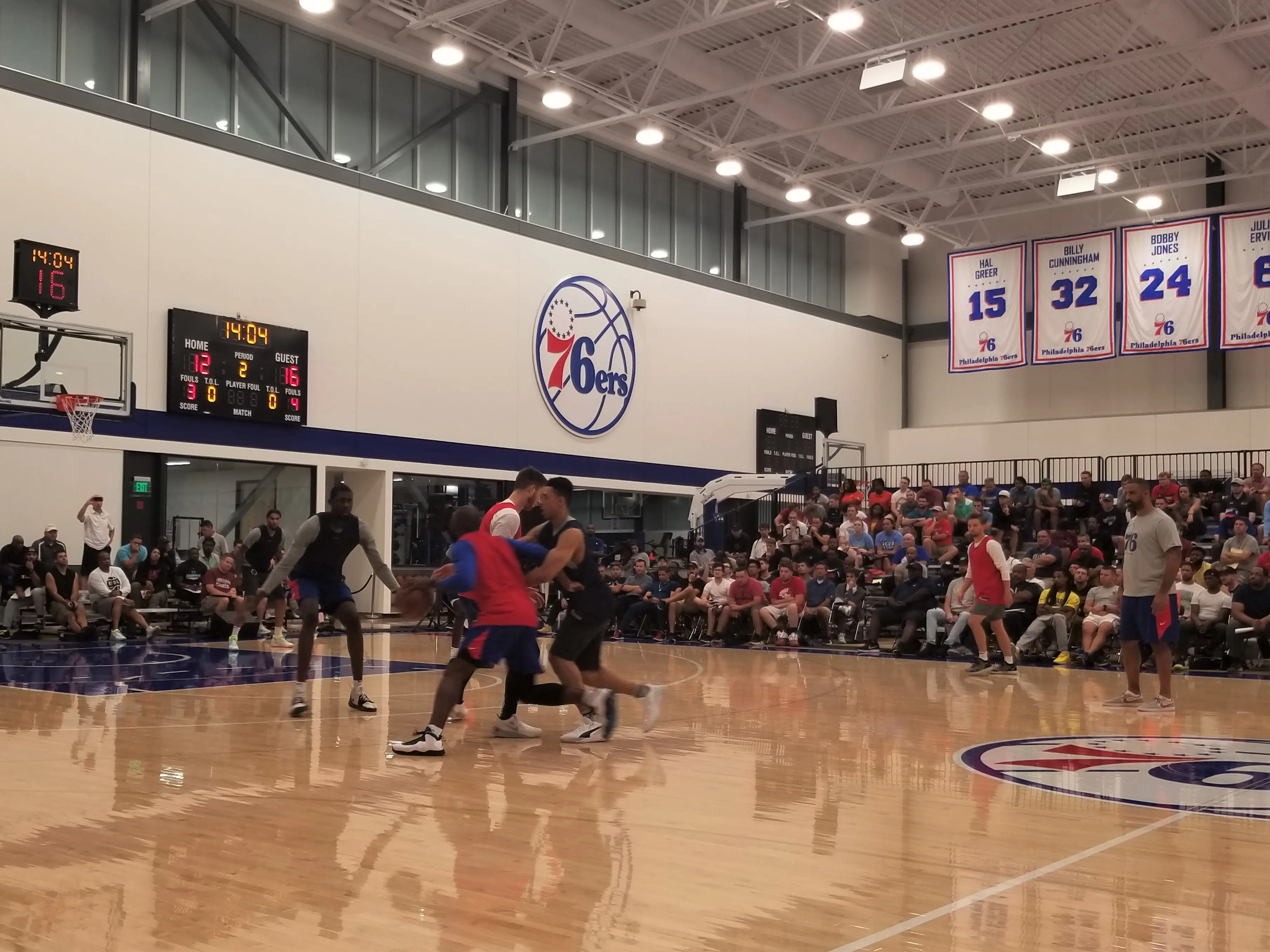
Notes from Brett Brown's Coaching Clinic, Plus a Few Minutes with Ime Udoka and Joseph Blair
The Sixers’ season unofficial begins each year with Brett Brown’s annual coaching clinic at the Camden practice facility.
It’s the “second favorite thing I do,” the head coach told a few hundred attendees on Monday night, explaining that he feels a necessity to pass on information to fellow coaches and give back to the community. His favorite thing, after coaching the coaches, is coaching his own players.
So each year the ~90 minute presentation includes one segment each from Brett and his assistants, with each focusing on a concept and sharing some basic information on what the Sixers do philosophically. This year Jonah Bolden, Shake Milton, Zhaire Smith, Christ Koumadje, and Marial Shayok played the role of guinea pigs while Matisse Thybulle sat this one out after rolling his ankle earlier. He is, however, expected to be fine.
After the clinic we got some time with new assistants Ime Udoka and Joseph Blair, who replaced Monty Williams and Billy Lange, so I’ll put some of those quotes at the end of the story. First, some notes on what each coach talked about during their portion of the clinic:
Brett Brown
Brett went through progressions of an offensive drill that exemplified how the Sixers like to move the ball and space the floor, explaining how he uses the “four point line” at the practice facility to encourage players to step into a three point shot or catch and drive instead.
You’ve seen it plenty of times before, and I’ve written about it before, but the concept of the four-point line is basically to encourage spacing and ideal technique. For instance, NBA defenders are athletic enough to stand at the opposite elbow, deny a slot drive, and then slide back out to the three point line to defend. It’s much harder for them to slide and cover a guy who starts at the fictional four point line, because the starting point is further back, which I’ve illustrated in the two diagrams below:
On the left, the yellow X is a defender who can slide to both offensive players. On the right, that close out is harder when his man is spaced to the four point line.
The Sixers don’t have hard and fast rules for “go guys” and “get back guys,” which are terms Brown uses for offensive rebounders and players who retreat defensively. Sometimes, generically, centers and power forwards will crash the boards while small forwards, shooting guards, and point guards “get back” in defense. The Sixers aren’t glued to that rule, and they add another line to the court to help with rebounding, which is a short arc that cuts in front of the foul line, looking like this:
That’s another unconventional thing they practice.
One more concept I’d like to share from Brett’s portion of the program, which is off-ball movement when defenders chase off the corner.
For example, if you have a corner three, the defender closes out, and the shot is no longer there, you’re likely driving the baseline instead, right? What the Sixers want from the other four guys is described as ‘dots,’ ‘drift,’ ‘diagonal,’ and a fourth position that I don’t think had a specific term, but basically just involves a guy standing ballside at the three point line:
The black X signifies the guy with the ball. ‘Dots’ is a big, who is pulling in front of the rim for a dunk. ‘Drift’ is the weakside player running into the opposite corner. ‘Diagonal’ is that kick out pass and then the fourth guy is nearside high. That’s how they’d like their players to move in these scenarios.
Brett also reiterated his disinterest in play calling, saying this, in part:
“Plays aren’t the thing that get you over the top.. it ends up being more about concepts and fundamentals than plays.”
Jay Wright would tell you the same thing. He doesn’t really call plays, he teaches concepts instead. That’s why I always felt it was a little confusing when people would express their dislike for Brett Brown, but call for Wright to replace him. They believe in similar offensive concepts.
Kevin Young
His segment was about the Sixers’ “A to B” motion offense, which is just slightly different this year. They are going to have a different starting point for the ballside wing player.
In previous years, this player, JJ Redick, would start at the foul line extended. Then JJ would flow into his the two-man DHO game with Joel Embiid, right?
So this year that wing player, whether it’s Josh Richardson or whomever, is going to start in the corner instead. I didn’t catch all of Young’s explanation, but he basically said that Redick and Marco Belinelli liked to start higher because it was easier for them to wriggle free and find open shots. Here’s a diagram showing the old starting point vs. what they want to happen this year:
There was also a tweak to the second big’s starting position, which I did not fully catch. I believe they’re giving Al Horford, or if Embiid comes down the floor first, a little bit of leeway in where they’d like to start near the weakside elbow.
Ime Udoka
His portion was about middle pick and roll defense.
The concepts are the same. They want Joel Embiid near the rim and staying inside the foul line. They want center field coverage with a rear contest from the on-ball defender. They want to show a crowd of bodies.
More on all of this during the season, since we’ll have plenty to talk about in this department when they start playing. There are a bunch of different coverages to talk about.
For now, I want to share some quotes from our first availability with Udoka, the 42-year old former NBA player who joined Brown’s staff this year after seven seasons on the Spurs’ bench. He crossed paths with Brett in San Antonio both as a player and fellow member of the coaching staff.
Udoka came over to speak with media after wrapping up his portion of the clinic.
Crossing Broad: So what brought you here? And why come here? You left a pretty good job in San Antonio.
Udoka: Yeah, you know at some point, I’d been in San Antonio for seven years and had a few head (coaching) interviews and just wanted a change, a different challenge. Looking forward to getting back and getting reunited with Brett, someone I have a lot familiarity with. And obviously it’s a great team here so I’m looking forward to that.
Philly Voice: Brett, during his time here, I don’t know if this is the same as Pop, but he likes to have coordinators, so there’s an offense and a defense guy. Are you going to the defense guy?
Udoka: Yeah, I’m the defense guy and that’s different from San Antonio for sure. Pop doesn’t have offense or defense (coaches), you do everything, which helps you become well rounded. But it’s something natural to me. I was that guy as a player (defensively sound) so it’s a natural progression for me.
Inquirer: It sounds like you have more coaching responsibility here. Is that the case, and is that also a reason to come here?
Udoka: I wouldn’t necessarily say more. It’s different though. I’m in charge of defending pretty much every game. San Antonio you had eight or nine teams that were specifically yours that you were in charge of offense or defense, so it’s not really “more,” but it’s a different responsibility.
And later on, we spoke with Joseph Blair, Brett’s other new assistant. Blair is a 6’10” former Arizona product who enjoyed a lengthy career overseas after college. He returned to Tucson as an assistant coach from 2013 to 2015, then spent the last four years coaching the Rio Grande Valley Vipers, which is Houston’s G-League squad, as both an assistant and the head coach.
Crossing Broad: Can you tell us a bit about your background, about how you ended up here, your connection to this team, who you know, and how far back that goes?
Blair: So last year I was with the RGV Vipers, head coach there, was my fourth year with the Vipers and the Houston Rockets’ organization. God’s plan, to be honest with you; I can’t say I really knew anyone before I got here. I came here and I was blessed enough to make a good connection. I think Brett and I get along very well and we have a really good connection, a lot is my experience as a European basketball experience as a player, I think we mesh well with that. I’ve just been really blessed to be around a good organization and good staff. They value me me here, value what I do. I’m happy to be here and excited for the year.
Crossing Broad: Brett kind of breaks it up a little bit, uses “coordinators” – what did he tell you about what he wants to work on specifically? What’s your role and focus?
Blair: Well I’m on the offensive side of the ball, but we’re a very inclusive staff. It’s not that just offense can talk about offense. I can also chime in on defense. We’ve had our meetings this past week where I’ve chimed in quite a few times on the defensive side of the ball as well. Obviously my role and responsibility is more on the offensive side of the ball, just try to help out where I can, see things I can see and hopefully add value there.
The Athletic: Brett talks a lot about how he splits it up, like special teams, kind of after timeout (ATO) things; is that something you’re going to be a part of, too? He calls it a third of the sport.
Blair: When I came in we talked heavily about the thirds. This year it’s gonna be a little bit different. We’re trying to mesh those things a little bit more, so we’re not exclusively talking about after timeouts or after misses or after makes. Obviously there’s still going to be a delineation and a bit of priority placed on certain aspects, but moreso than ever, in my opinion, Brett is starting to mesh those and marry those things together.
Brett Brown’s media luncheon is tomorrow, Wednesday, and training camp begins next Tuesday, one week from today.


